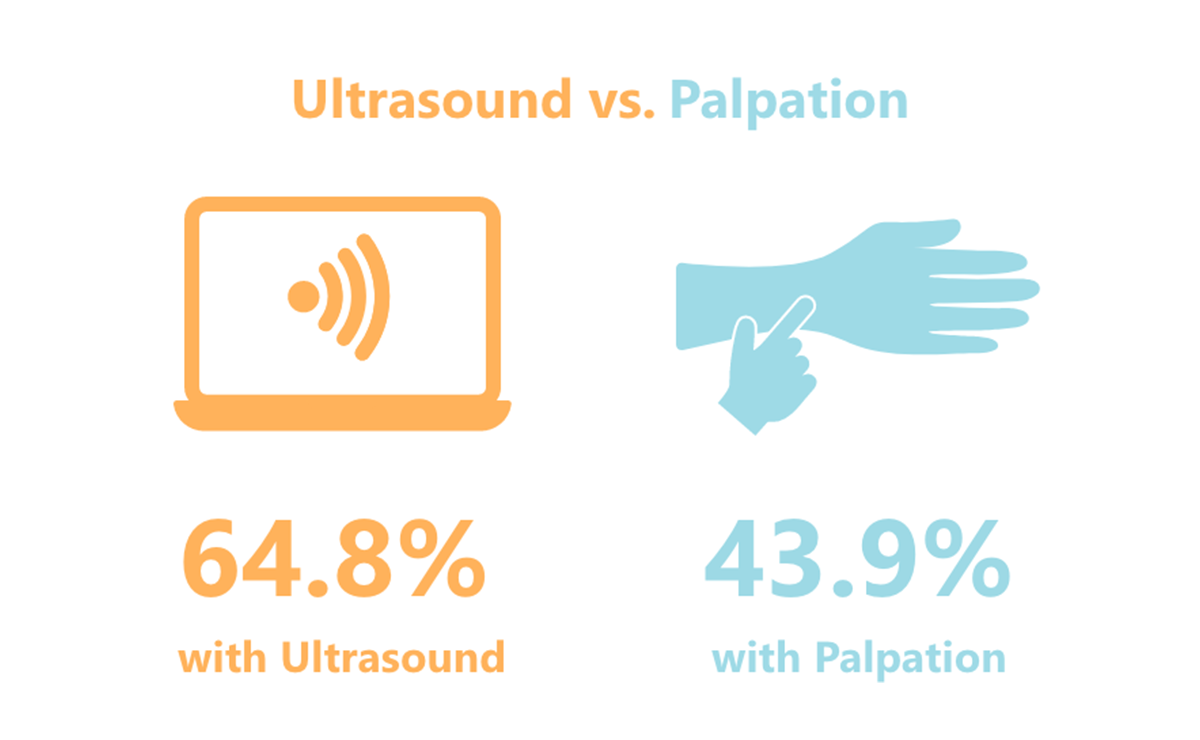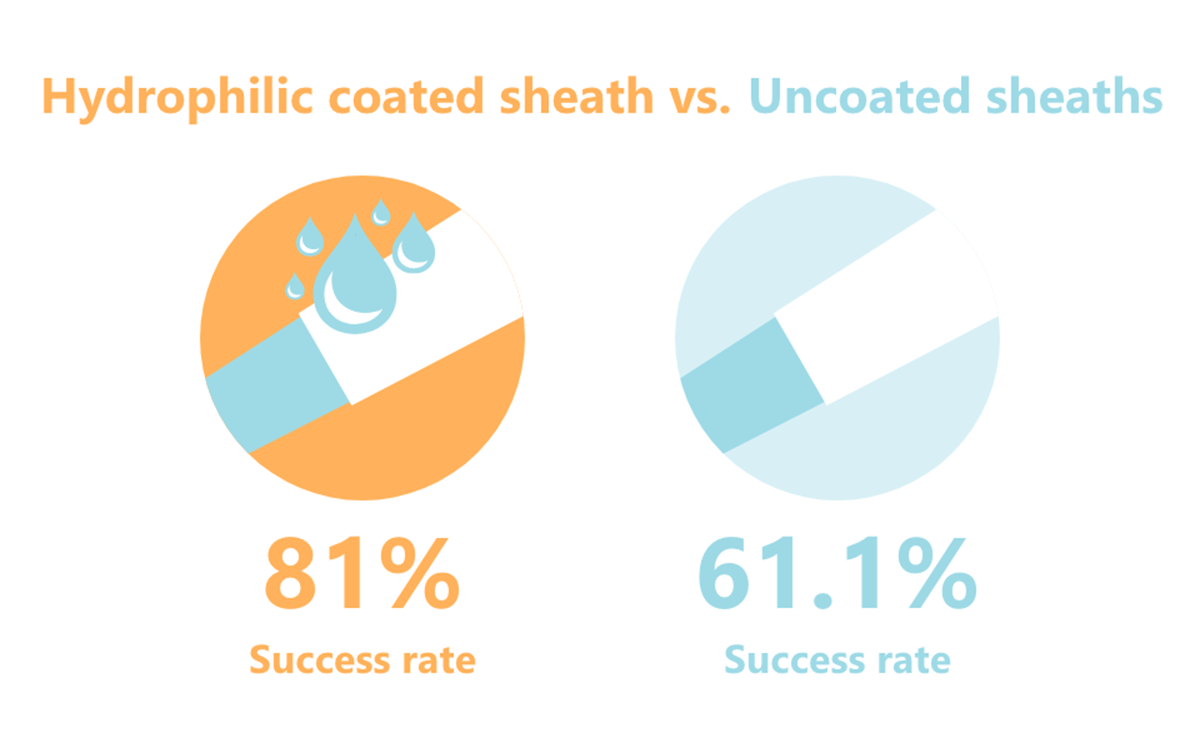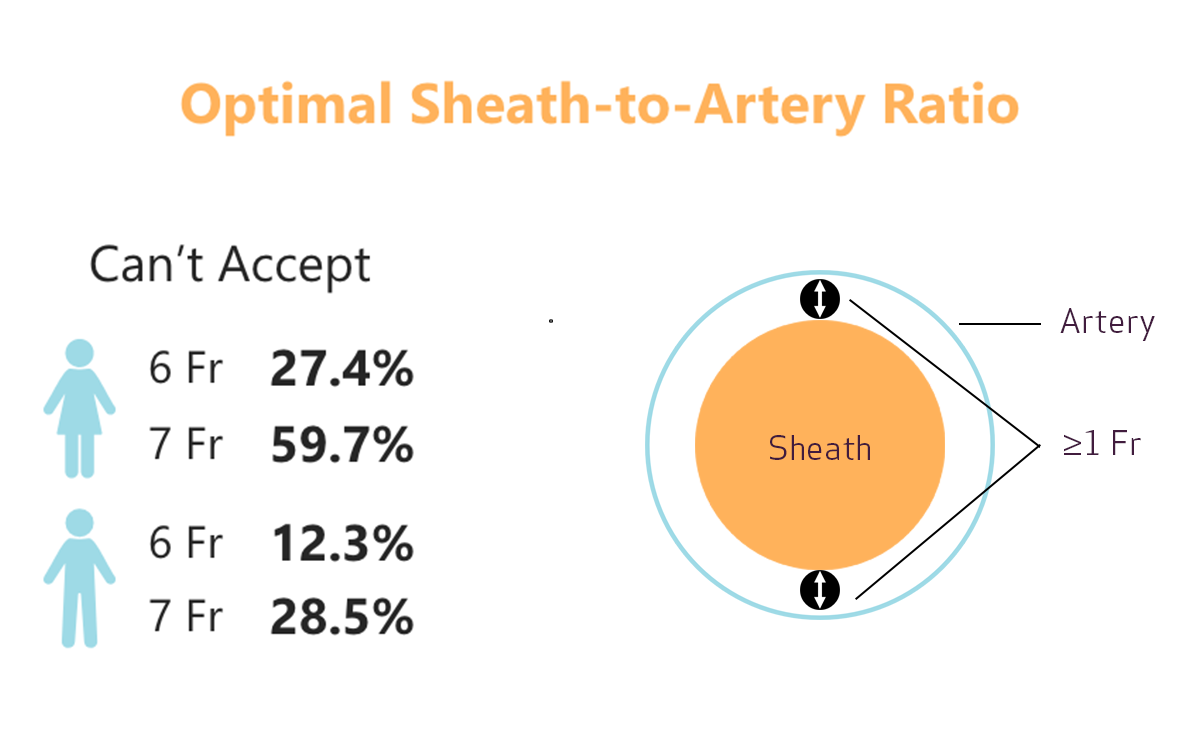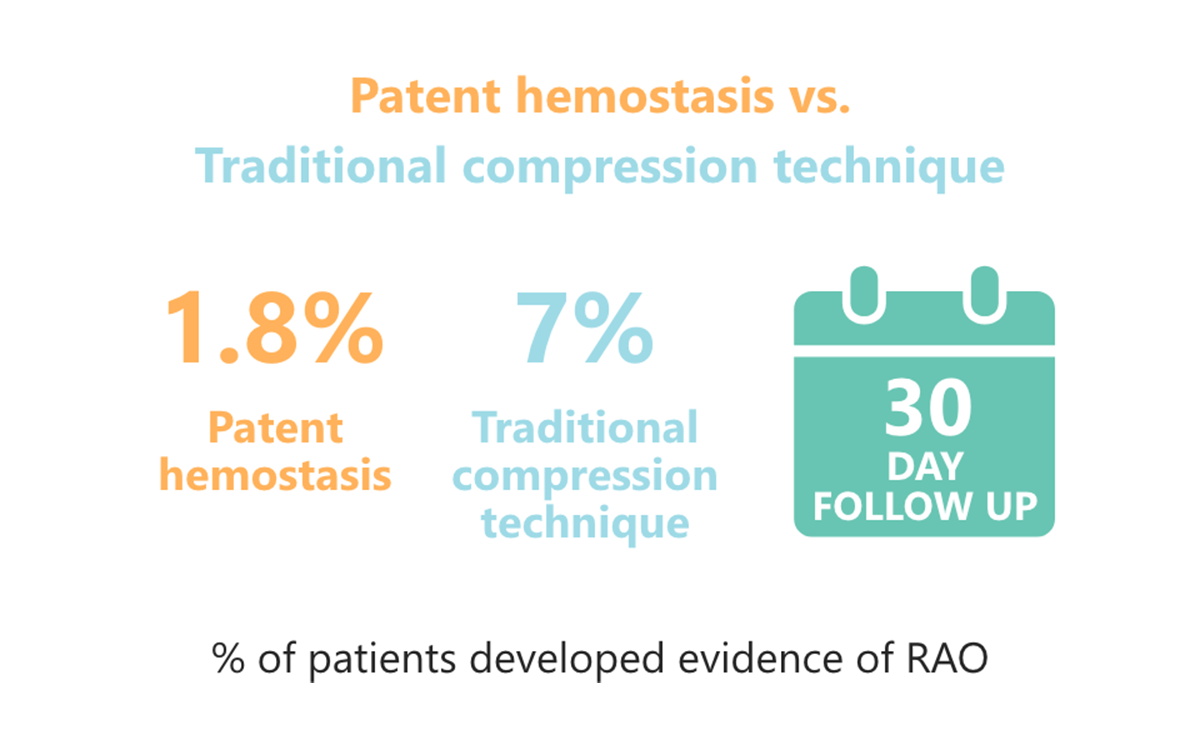Radial Solutions
Transradial Intervention
Proven to reduce bleeding rates, in-hospital mortality and related hospital costs1,2

Compared to palpation, ultrasound reduces the number of difficult procedures* with a significantly higher first-pass success rate.3
*Difficult procedures are defined as those requiring ≥5 attempts.

Radial artery spasm avoidance
Compared to uncoated sheaths, hydrophilic coated sheaths reduce the incidence of radial artery spasm which may lead to procedural disruption, patient discomfort and procedural failure.4

Sheaths with an outer diameter that is not ≧1Fr of the inner diameter of the patient’s radial artery may cause distal flow reduction – and be a factor in radial artery occlusion.5
(n=250)

% of patients developed evidence of RAO
Compared to traditional compression techniques, patent hemostasis minimizes evidence of radial artery occlusion and vascular access complications.6
(n=480)